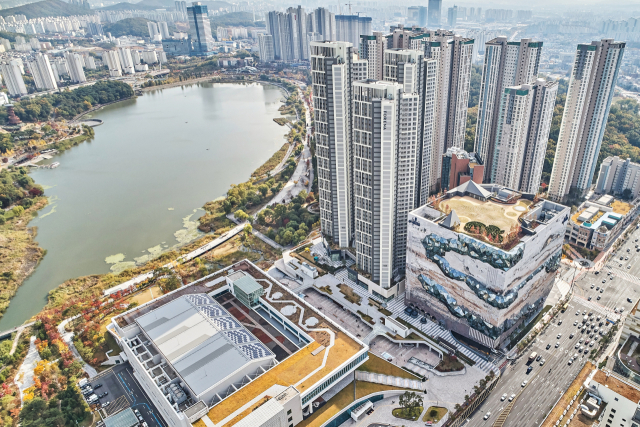 viewer
viewer
At the end of last year, measures to stabilize house prices were announced one after another at a monthly interval. As a result, more than half of all cities, counties, and districts nationwide have been grouped as regulated areas, with 49 overheated districts and 111 areas subject to adjustment. However, even in the new year, the overheating of the real estate market that spread across the country has not subsided. This year’s cumulative increase in apartment sales prices nationwide surpassed the same period last year. Despite the strong measures that came out at the end of last year, an unusual atmosphere in the real estate market was detected from the beginning of the year, and voices were mixed with concern, saying,’Isn’t the house price rising more this year?’ In the midst of this, the collapse theory of’too high’ is spreading at the same time.
 viewer
viewer
According to weekly statistics released by the Korea Real Estate Agency, the cumulative increase rate of apartments nationwide for three weeks from the first to the third week of January this year is 0.81%. It has doubled the rate of increase of 0.26% over the same period last year, 2020. In detail, out of 17 provinces, 14 provinces excluding Daejeon, Sejong, and Jeonnam, this year’s cumulative increase rate exceeded the previous year’s figures.
Regions where house prices fell earlier last year also turned to rise this year, and an increase was observed in all 17 provinces nationwide. In the four regions of Gangwon, Cheongbuk, Gyeongbuk, and Jeju, all of the same period last year recorded a’negative increase rate’ and house prices fell. However, in this year, everyone recorded’rise’ and the atmosphere changed. The nationwide house prices are literally staying in the’buljang’.
Seoul, the barometer of national house prices, also surpassed that of the same period last year. The increase rate of apartment sales in Seoul from the first week to the third week of January last year was 0.15%. On the other hand, this year, it recorded 0.23%, which is higher than this. Seoul’s rise was driven by Gangnam 4 districts (Gangnam, Seocho, Songpa, and Gangdong-gu), where expensive apartments were concentrated. Gangnam 4 district, which recorded a change rate of 0.05% last year and ranked the lowest in Seoul, has already increased 0.34% this year. Gangnam-gu jumped from 0.05% last year to 0.29% this year, Seocho-gu jumped from 0.02% to 0.30%, Songpa-gu jumped from 0.04% to 0.43%, and Gangdong-gu also rose from 0.12% to 0.33%. This is interpreted by the impact of a sharp jump in the price of a reconstruction complex in the Gangnam area as the demand for’one smart house’ increased due to heavy real estate tax, and the recent increase in expectations for reconstruction promotion.
The rise in prices of apartments in Gyeonggi-Incheon was also steeper than in the same period last year due to the’reverse balloon effect’, in which the purchase trend returned to the metropolitan area after the national house price rose. The growth rate of apartment sales in Gyeonggi, which was 0.52% last year, rose sharply to 1.15% during the same period this year, and Incheon also recorded an increase of over 1% from 0.19% to 1.03%.
 viewer
viewer
While watching the’fire market’ atmosphere at the beginning of the year, the market is also spreading claims that’the price of the house has reached its peak’. Although the current government has been talking about the’fall theory’ throughout the period of rising house prices, it is argued that the time has come. The rationale for the cliche is that △The time to reverse the decline in the market cycle has arrived, △External environmental insecurity factors such as novel coronavirus infection (Corona 19) are spreading, △The government’s regulatory stance and supply countermeasures will be effective.
It is argued that the recent overheating atmosphere of the housing market appeared earlier in 2006, and this is the same situation as when it peaked and reversed. There is also evidence that the economic crisis caused by Corona 19, like the US financial crisis that broke out in 2007, will inspire market instability. The recent rise in house prices is due to abundant liquidity amid low interest rates caused by Corona 19, and it is argued that if the economy stabilizes and interest rates start to rise, the funds that have flowed into the real estate market will rapidly drain, which will instigate a decline in house prices. The gist of these arguments is that if the government’s supply expansion policy, including the 3rd new city, is effective, the price is difficult to increase.
However, experts generally responded that it is’difficult to agree’ to such claims. Yeo Kyung-hee, senior researcher at Real Estate 114, said, “Since there is a higher possibility that the floating funds released on the market will flow into real assets such as real estate, there is still room for upside.” Regarding the claim of the collapse theory, he said, “Even if there is a possibility of an interest rate hike, it cannot rise sharply at once. It is difficult to think that this will lead to a sharp decline.” Professor Shim Gyo-eon of Konkuk University pointed out that “the collapse is not only an indicator, but only when there is a big incident at the level of the IMF bailout fund”. “The crisis caused by Corona 19 is difficult to say. Reporter Ji-yoon Yang [email protected]
/ Reporter Jiyoon Yang [email protected]
< 저작권자 ⓒ 서울경제, 무단 전재 및 재배포 금지 >
